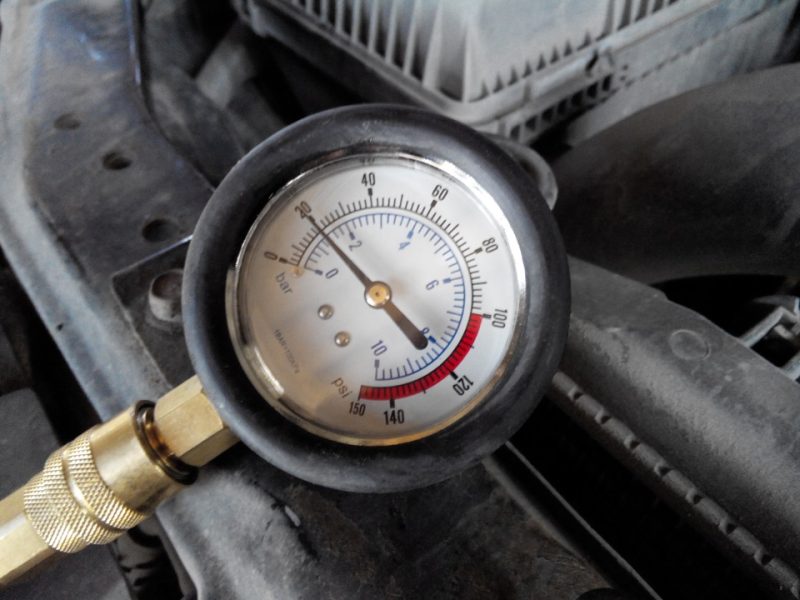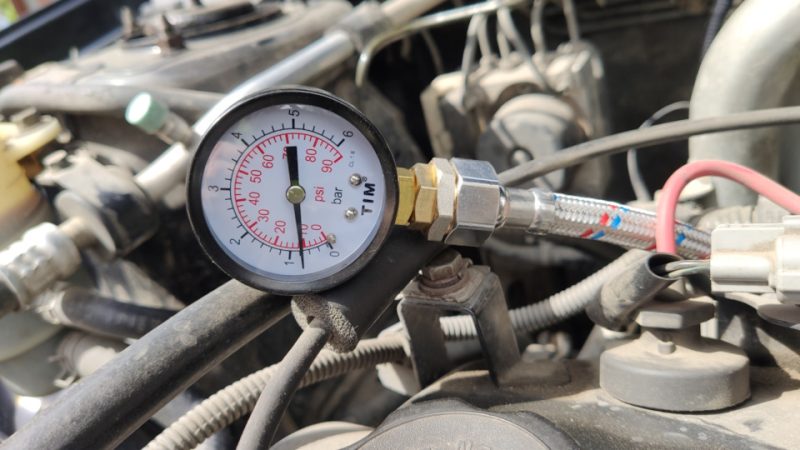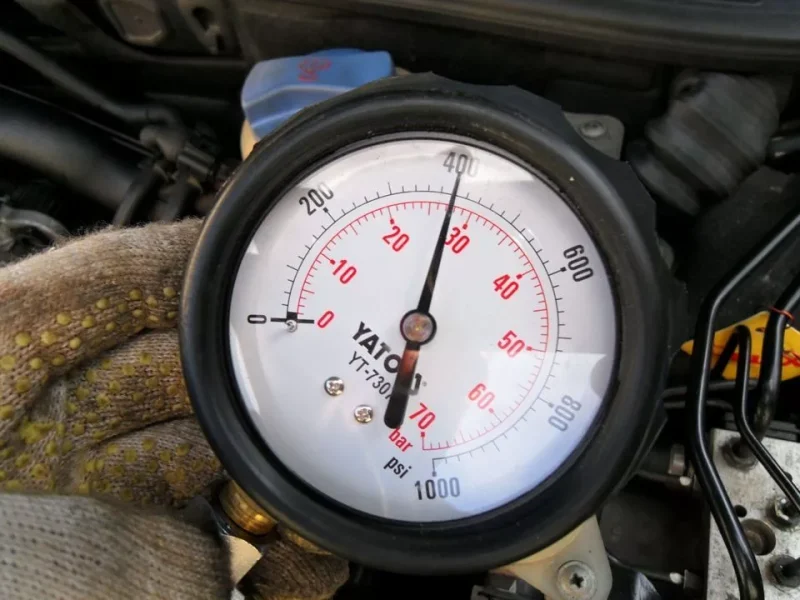An internal combustion engine has always needed good lubrication, and nowadays, as speeds and power outputs have increased by leaps and bounds, it needs it especially. Not only must the oil be of high quality, but it must circulate through the system at a certain pressure. We tell you what oil pressure should be in the engine, how to measure it and why it can deviate from the norm.
Why the engine creates oil pressure
Almost all moving parts in the engine need lubrication. Without it, there will be strong friction between them, and where there is friction, wear is inevitable. And then there’s heating, which essentially takes away useful energy from the motor and also accelerates wear.
Some components (for example, the timing chain drive) are lubricated by splashing. But the most important parts, especially the crank mechanism, camshafts, balance shafts and turbocharger bearings, are supplied with oil through narrow channels in the lubrication system. To ensure that the oil reaches the friction pairs and lubricates them properly, a certain pressure must be created. This is done by the oil pump, which draws oil from the engine crankcase and feeds it through a filter into the lubrication system.
Oil pressure is more difficult to control than oil level. At least because it is created only when the engine is running, when the oil pump is rotating, and in most engines it is driven from the crankshaft. That is why checking the oil pressure in the engine is automatic. The corresponding sensor is located in one of the lines of the lubrication system. If too low pressure is detected, it signals the electronic control unit, and the latter switches on the emergency light on the dashboard (and informs the driver with a text line on the on-board computer screen). In older cars, the warning system is simpler, but the driver is notified in much the same way – by a bright red light, which obliges to stop driving as soon as possible and turn off the engine until the causes of low oil pressure are clarified.
What oil pressure should be in the engine

Let’s assume that the warning light on your car has come on. How to check the oil pressure in the engine? To begin with, it is worth understanding what pressure in the internal combustion engine is considered normal. But this is not a constant value. What is logical: at idle speeds, the rotation of the crankshaft is relatively slow, the load on the parts is minimal, and a small pressure is enough. And with increasing revolutions, lubrication needs grow. In general, you can be guided by these values for gasoline engines:
- oil pressure in the engine at idle speed – about 1-2 atm (0,1-0,2 MPa);
- at speeds of 4500-5500 rpm – from 4 to 6.5 atm (0.4-0.65 MPa).
These are average benchmarks – the real, recommended by the manufacturer values can differ in both directions, and you can learn them only from the service documentation for a particular model and modification of the car.
How to check the oil pressure in the engine
Now about the very measurement of oil pressure in the engine. Like any other pressure, it is measured with a pressure gauge. A suitable device is available at service stations. Car owners do not need it, because the need to assess the pressure in the internal combustion engine occurs very rarely.
The diagnostic kit includes the gauge itself with a hose plus a set of adapters for connection to different engines. There are no tricks: the device is connected to the oil line (usually instead of the standard pressure sensor), then the engine is started, and the master evaluates the pressure at different speeds.
Why pressure can be low or high

Knowing how to measure oil pressure is also important to understand why it may not be normal. Usually, malfunctions result in pressure values that are too low or completely “absent”. Here are the most common ones:
- Inadequate oil in the system. The oil level can drop to a critical level due to carbon monoxide consumption or leaks, and then at certain times (e.g. in tight corners, on steep gradients or at high engine speeds) the pump simply sucks in crankcase gases instead of lubrication. The solution is simple: top up the oil. And why its level drops quickly or strongly – will have to be dealt with separately.
- Increased clearances between engine parts that are lubricated under pressure. For example, between the crankshaft connecting rod journals and liners. This is a consequence of heavy wear of parts and the most unpleasant cause of low oil pressure in the engine. To solve it will require a major overhaul of the motor.
- Wear and tear of the oil pump. Not so noticeable, but no less dangerous cause of low oil pressure in the engine. When it fails completely (for example, due to drive failure), the red light bulb comes on at once – because oil pumping stops. But the pump can also pump without producing working pressure due to wear of its parts, deposits on the internal parts or clogging of the oil receiver grid, which lets in insufficient lubrication. Without diagnostics it is difficult to fix it, but at the same time some moving parts of the motor will experience so-called oil starvation and from this quickly wear out. If a malfunction is detected, the assembly must be removed, cleaned, repaired or replaced in its entirety.
- Malfunction of the pressure reducing valve. As a rule, this valve is built into the pump housing and regulates the pressure created by the pump. The valve can jam in the open position, and then the pump will work “idle”, and oil can not enter the engine lubrication system.
- Oil liquefaction by fuel or coolant. The oil viscosity drops, and with it its pressure. This happens mainly due to damage to the engine gaskets or fuel pump, which must be replaced.

Much less often, but it happens that the measurement of oil pressure in the engine, on the contrary, shows too high values. This is not good either, primarily for the oil filter, which can collapse. In addition, high pressure can provoke oil leaks through gaskets and seals. There can be several causes of the problem:
- Oil that is too thick. High viscosity also leads to an increase in lubrication pressure. The pressure reducing valve is only activated at critical values, so the pressure will be exceeded at relatively low speeds. The danger in this situation is that thick oil, even under high pressure, does not penetrate the narrow gaps between the parts very well. Above all, this is dangerous for the crankshaft liners.
- Clogged pressure reducing valve. This is the opposite problem to the one described above, when the valve is wedged due to deposits and does not open at high pressure. To solve this problem, in most cases it is also sufficient to simply flush the lubrication system.
- Contamination of the lubrication system channels. As a result, their flow capacity is reduced, which means that oil starvation is again possible in some friction pairs. At least flushing the lubrication system is necessary.
- Clogged oil filter. A dirty filter also creates increased resistance to the oil flow, which increases the oil pressure. The danger here is that the filter usually has its own bypass valve in case of high pressure, which in such a situation will let the lubricant flow “bypass”, because of which it will cease to be cleaned. Replacing the filter element (and the oil, of course) with a new one will help.
Summarized results
- Oil must circulate through the lubrication system under a certain pressure. It increases with increasing engine speed.
- A critical drop in oil pressure is always indicated by an indicator light or text on the dashboard screen.
- Both too low and too high a pressure is bad for the engine.
- Depending on the cause of the pressure problem, the solution can be simple and cheap (flushing the lubrication system) or complex and expensive (engine overhaul).
